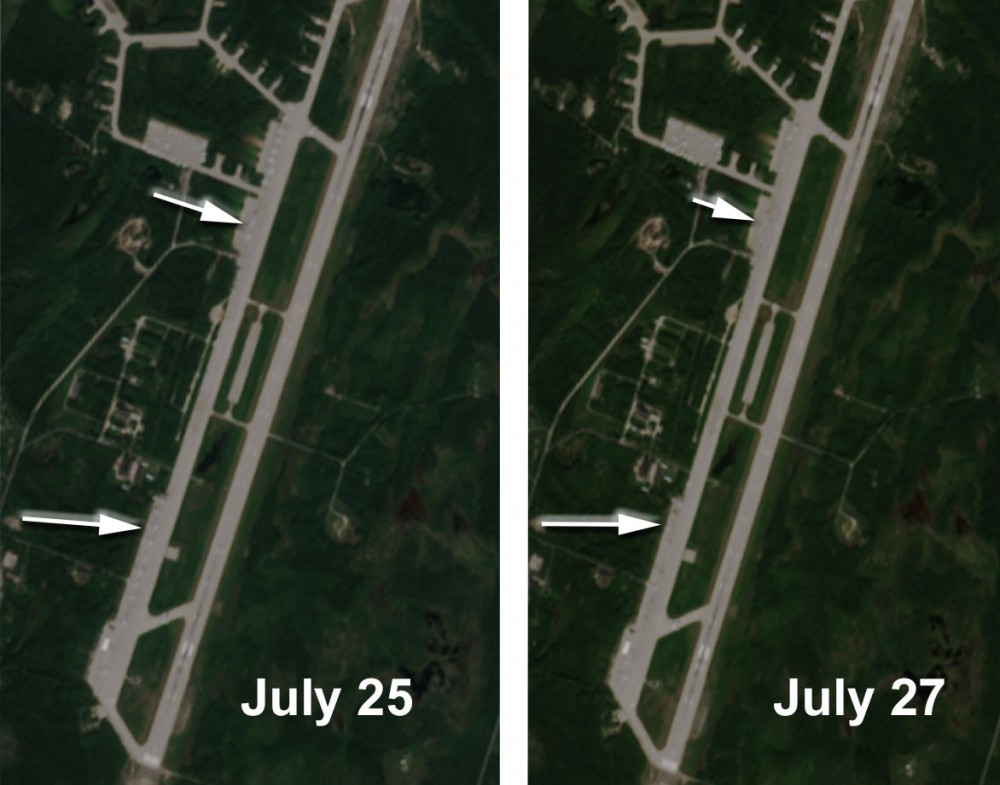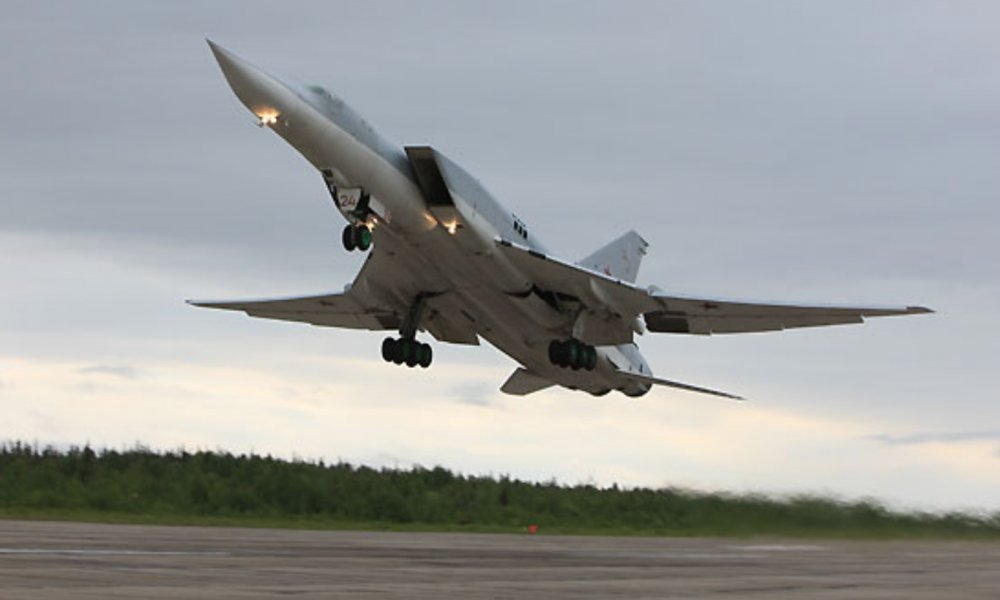Jeg har dessverre fremdeles problemer med å finne verifisering av HURs opplysninger. (Red.)
No air raid alarm triggered during drone attack, HUR says
The explosion happened over the planes, Andrii Yusov says to Radio Svoboda. He details the two supersonic bombers to be No. 33 and No. 31.
“No. 33 has holes in the upper part of the fuselage. And No. 31 also has some damage,” Yusov says.
The drone attack on the remote airfield of Olenya on the Kola Peninsula became known on July 27, but according to the Ukrainian military intelligence the attack happened on July 25 at approximately 3:47 pm.
Studies made by the Barents Observer of Sentinel satellite images show that several of the aircraft, including Tu-22M3, parked at two of the aprons on July 25 are not there on the 27. Planes could be relocated, are out on mission as the satellite passed over, or taken to hangars. Sentinel’s images have too low resolution to make any conclusions on what impact the drone attack might have had.

“The information has been confirmed from various sources, and we can already speak about the very fact of this incident as something that definitely took place,” the HUR spokesperson said.
Andrii Yusov also mentioned that the air alarm did not go off at the airfield.
There are no information available on what kind of drone hit the Olenya airfield. An expert talking to the Barents Observer says it is “unlikely that the drone flew all north from Ukraine.”
The strategic bombers’ airfield south of Murmansk is 1,800 kilometers from Ukraine’s border with Russia.
Small fixed-wing drones, quadcopter or octocopter could easily be transported north to the Kola Peninsula in the trunk of a private car or in a small van.
Russia’s air defense systems are not designed to take down small drones carrying explosives.

Olenya airfield is located next to the town of Olenegorsk, where iron-ore mining takes place. A closed military town, Vysoky (also known under the military code-name Olenegorsk-8), is home to the air crew, the service personnel and their families. Further into the wilderness, north of Vysoky, is one of Russia’s main central storage for nuclear warheads located, the Bolshoye Ramozero (also known under the military code name Olenegorsk-2).
Bomber sorties
Olenya airfield is frequently used by Russia’s strategic aviation to attack civilian infrastructure in Ukraine with cruise missile. It was Tu-95MS bombers from Olenya that less than a month ago bombed the children’s hospital in Kyiv.
Ukraine military units have restrictions on the use of western-supplied weapons to attack targets inside Russia, but many of the drones used to attack military installations and oil-refineries are produced domestic in Ukraine.
President Volodymyr Zelenskyy has said that any airfield, or aircraft used by the enemy to bomb Ukraine are legitimate targets.




Ingen kommentarer:
Legg inn en kommentar
Merk: Bare medlemmer av denne bloggen kan legge inn en kommentar.